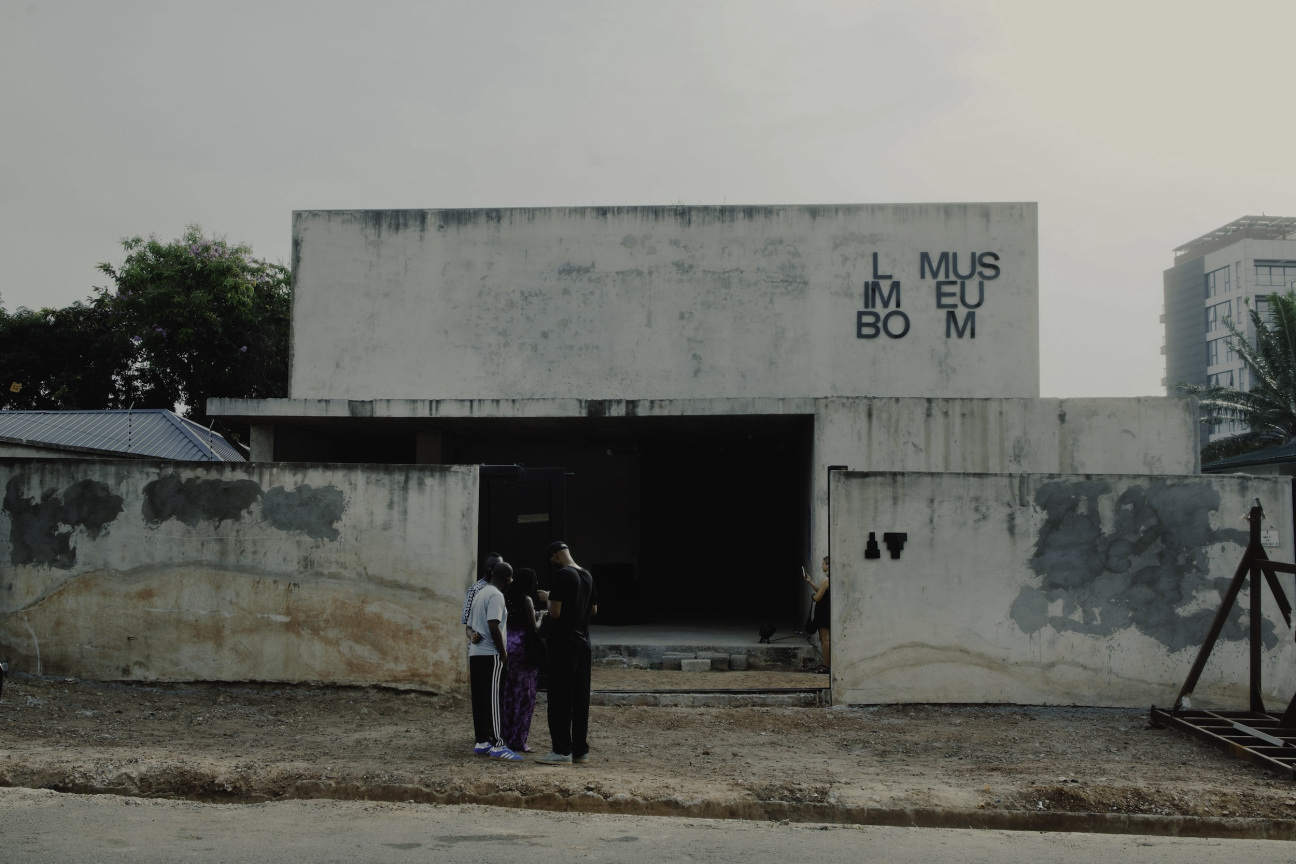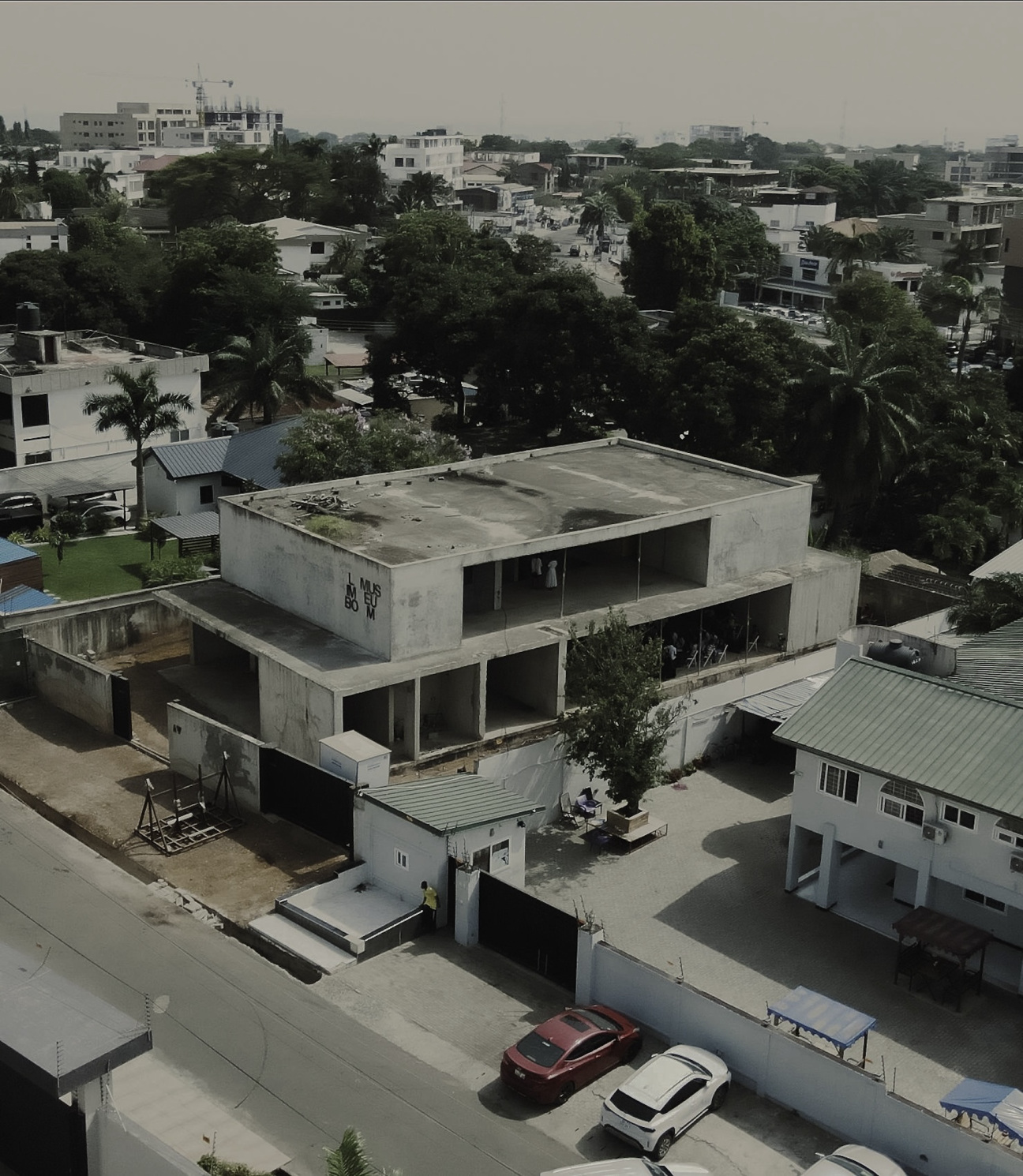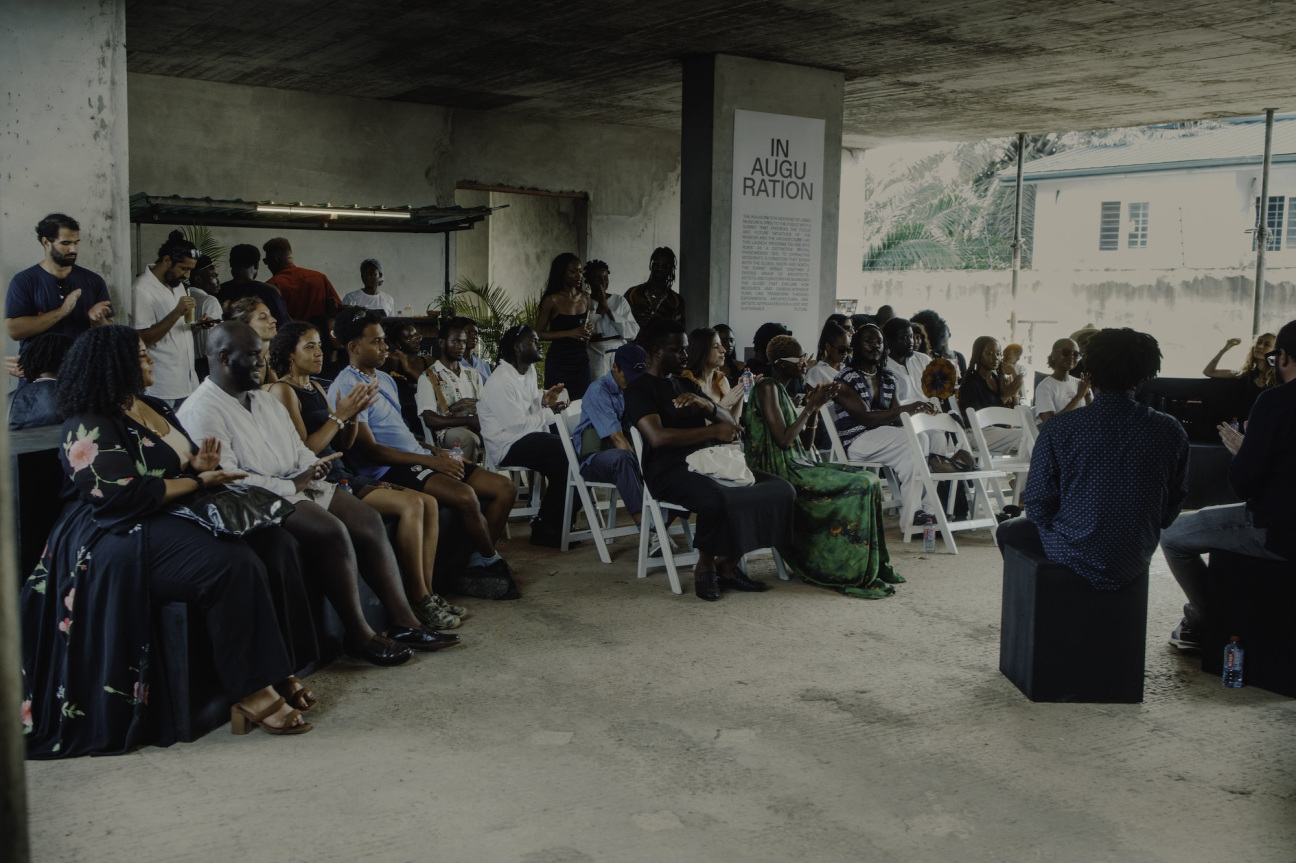
How does one go from dreaming up a cultural institution to actually building it? Ask Dominique Petit-Frère and Emil Grip.
The architects behind the award-winning spatial design and research studio Limbo Accra have spent their careers pushing against commonly held conceptions of space, monumentality, and preservation and challenging how we think about museums. Then, late last year, they did something that might seem out of character. They founded their own.
But the Limbo Museum, which opened its doors in November with a three-day summit in Accra, is not a typical museum. Operating out of a formerly abandoned Brutalist estate in Labone, a bustling neighborhood in Ghana’s capital city, it has no collection or full-time staff beyond the founders. It shares the philosophy that has guided Limbo since its inception as an architectural studio in 2018: that spaces other people might see as architectural ruins are actually blueprints for gathering spaces.

Petit-Frère and Grip’s approach aligns with the work of Nigerian architect Kunle Adeyemi, whose influential 2007 essay "Urban Crawl" invited the public to consider cities in the Global South as paradigms for the future.
“I think it's one of the most interesting projects in architecture today,” says Hans Ulrich Obrist, the artistic director of the Serpentine Gallery in London, who attended the kickoff symposium alongside artist Ibrahim Mahama, architect Tosin Oshinowo, and Mallory Cohen of the Museum of Modern Art in New York. “What makes it so fascinating, Obrist said, “is this idea that’s not about adding new buildings but it’s about how non-activated architecture can be reactivated and given a new life.” The project reminds him, he shared, of the prominent urbanist Cedric Price, who focused on the idea of “magnetizing existing infrastructure” in the '60s and '70s.

But even a nontraditional museum needs infrastructure to get going. Limbo relied on a powerful network of well-connected people, grant funding, partnerships, and a strong community of staunch advocates. To date, Limbo has partnered with Sotheby’s (on a benefit auction), Artnoir (on a grant), the German construction company Schüco (for in-kind and financial support), among others.
In April, Limbo will team up with the itinerant Architectural Association Visiting School and the Kwame Nkrumah University of Science and Technology in Ghana to launch a research and training program called the Limbo Architecture Lab. The project “explores unfinished and abandoned buildings in West Africa, using them as sites for reimagining architecture through ecological, social, and community-driven approaches,” explains Petit-Frère, who appeared on CULTURED’s 2023 Young Architects list.
What began as a series of questions about the urgency of design, the promise of interdisciplinary collaboration, and the potential to push against the limits of a traditional museum led to the development of a series of digital initiatives and IRL practices. The Liminal Archive, the design studio’s most ambitious digital project to date, uses photogrammetry of ruins across the globe from West African to the Middle East to collaborate with artists and other designers.
Unlike traditional institutions, the Limbo Museum was not created from the top down solely through the wealth of private individuals, nor was it built exclusively from the bottom up with grassroots efforts and government investment. Instead, it’s been aptly birthed out of the liminal spaces of what is and what can be. What exists and what’s yet to be imagined.
Petit-Frère is looking forward to what’s on the horizon for 2025, with Lennart Wolff, who serves as Limbo Museum’s Architectural Director and leads the Visiting School, and Diallo Simon-Ponte, the Chief Curator, who will be leading the museum’s 2025 program, which includes a series of curatorial programs, expanded partnerships, and new opportunities for research and artistic exploration. “It’s an exciting chapter as we continue to create new possibilities, build on our vision and take the museum to new heights,” she says.










 in your life?
in your life?

